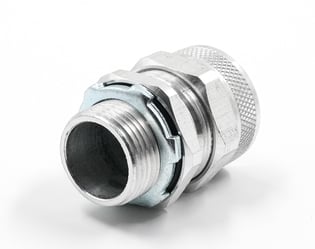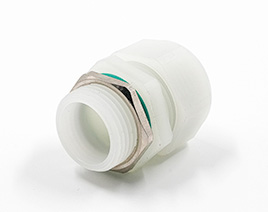 Cable glands are an essential component of any electrical installation, and understanding the different types of thread used in cable glands is important. The three most common types of threads used in cable glands are NPT, Metric, and PG. Understanding the differences between these thread types will help you choose the right cable gland for your needs.
Cable glands are an essential component of any electrical installation, and understanding the different types of thread used in cable glands is important. The three most common types of threads used in cable glands are NPT, Metric, and PG. Understanding the differences between these thread types will help you choose the right cable gland for your needs.
Considerations for Selecting the Right Thread Type
When selecting an industrial cable gland thread type, several crucial considerations come into play. First, assess the cable type, diameter, and material properties. Next, consider the installation environment, including corrosion protection needs, enclosure materials, and ingress protection ratings. Ensure compatibility with accessories like locknuts and sealing washers. Lastly, choose a suitable cable gland type based on safety requirements and standards. Proper selection ensures reliable connections and compliance with regulations.
CABLE GLAND THREAD TYPES
1) NPT (National Pipe Thread)
Definition: NPT is a widely used thread standard in North America, commonly found in electrical and plumbing applications.
Thread Characteristics:
- Tapered Threads: NPT threads have a 1/16 taper, meaning they gradually narrow towards the end. This taper allows the flanks of the threads to seal together effectively when torqued.
- The Flank Angle is 60˚
- Sealing Properties: NPT threads create a reliable seal, making them suitable for applications where moisture or dust ingress must be minimized.
2) Metric Threads
Definition: Metric threads follow the ISO metric system and are prevalent in most IEC (International Electrotechnical Commission) countries.
Thread Characteristics:
- Straight Threads: Unlike NPT, metric threads are straight without taper.
- Designation Format: Metric threads are denoted as “M” followed by the diameter in millimeters (e.g., M12) and the pitch (e.g., M12 x 1.5).
- The Flank Angle is 60˚
- Pitch: The pitch represents the distance between adjacent threads.
3) PG (Panzer-Gewinde)
Definition: PG threads originate from Germany and are commonly used in European electrical installations.
Thread Characteristics:
- Unique Flank Angle: PG threads have a smaller depth but a larger flank angle compared to NPT and metric threads. This results in a wider pitch along with a straight thread.
- The Flank Angle is 80˚
- Applications: PG threads are ideal for cable glands in harsh environments, offering robust sealing capabilities.
Example: PG sizes include PG 9, PG 11, PG 13.5, PG 16, PG 21, PG 29, PG 36, and PG 42.
Remember, selecting the appropriate thread type ensures reliable cable management and protection. At Amphenol TPC Wire & Cable we offer cable glands with options for metric, PG, or NPT threads. Feel free to contact us for more information or to discuss your specific needs!



